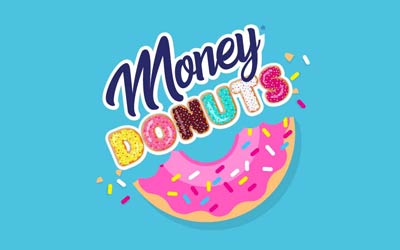
“New year, new me!” Those are the words we often hear or say to ourselves as the new year rings in. But did you know that only about 9% of people successfully stick to their new year’s resolutions? Here are 5 ways to be successful when setting both financial and personal goals for the new year.
- Build your foundation: Before we can set and start working towards our financial goals, we want to have a solid financial base built first.
- Understand your income and expenses: Knowing how much money you have available to work with and how much you are currently spending is key to setting financial goals. You don’t need to build a complicated budget - keeping it simple and going through your recent account statements is all it takes for this part!
- Have an emergency fund: Sometimes this feels impossible but having any amount of money set aside is going to be more helpful than having none in an unexpected situation. Make sure to keep this money in an account that is easy to access if you need it.
- Get debt under control: If you did a little too much holiday shopping on credit, or if you have pre-existing debt, planning to pay it off as quickly as possible saves you money in the long run. Explore the many ways to pay off debt and pick the method that best fits you.
- Set SMART goals: Using the SMART framework helps to break down setting goals into actionable steps, giving you a clear plan to be successful. We’ve included both strong and weak examples of each of the SMART categories.
- Specific: Write your goal and include the key details.
- Strong Example: I want to have $1,000 in my savings account by December
- Weak Example: I want to have $1,000 in my savings account this year.
- Measurable: Make your goal trackable!
- Strong Example: I will set up an automatic transfer from my paycheck for $42 to go into my savings account every two weeks.
- Weak Example: I will transfer money from each paycheck until I meet my goal.
- Achievable: Your goal should make you feel challenged but shouldn’t be something that has a negative impact.
- Strong Example: I know that I can’t afford to save $50 each paycheck and stay current on my bills, but I can save $84 a month to reach my goal of $1,000 by December.
- Weak Example: I’m going to save $100 each month even if it means making a late payment on one of my other bills.
- Realistic: Your goal should be something you can actually achieve.
- Strong Example: I know I can save $1,000 by December if I follow my plan.
- Weak Example: I’m not sure if I can save enough to meet my goal even if I adjust my savings amount as high as possible.
- Timely: Your goal should be for a known period of time.
- Strong Example: I will have $600 saved by June 30 to be on track to meet my goal of $1,000 by December 31.
- Weak Example: I would like to have $600 in my account by June or I just need to catch up until December to have $1,000.
- Specific: Write your goal and include the key details.
- Create a fun way to track: Having something visible to see your progress can be a great way to keep track of your goals. Try a savings jar coloring sheet that you fill in for each $25 or $50 you save. Or create a sticky note calendar on the wall and take off one sticky note for each day you accomplish your task.
- Determine your inspiration: Having a reason behind your goal will fuel your determination to stick to it. Are you building an emergency fund so you can pay for your expenses if you lose a job, or are you paying down debt so you can start saving for a down payment on a home?
- Be adaptable: Goals are not an unchanging plan – they’re more of a road map to guide us to where we want to be. As you manage your finances and work toward your goals, it’s likely that you’ll need to adapt to a change. Adjusting your goals as you go doesn’t mean you have failed. It’s okay to make adjustments. You might need to push your goal out another month or change the amount you planned to save. Being adaptable is being successful!
Looking for more resources to help you achieve financial wellness?
Check out Enrich Online Learning, our free financial education platform with personalized tools, courses, and more!




